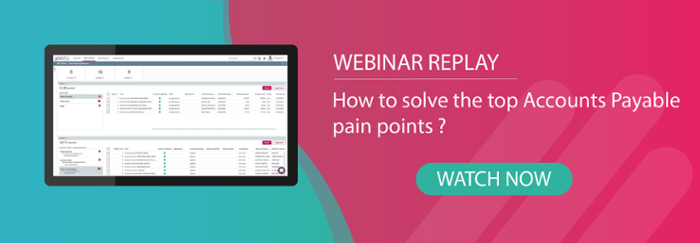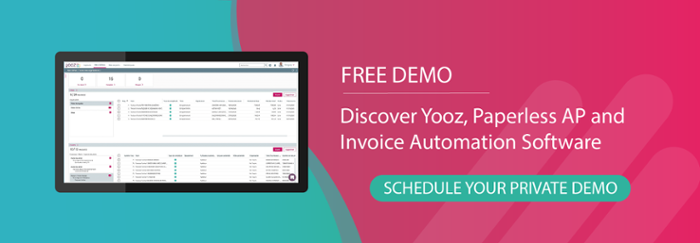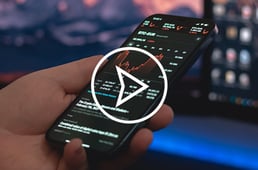While the rollout of digital transformation continues across finance, one of the biggest areas in terms of improvement has been in the use of invoice recognition technology. Software that helps extract and automate data from invoices is helping accounts payable departments become more efficient, reliable, and productive while reducing the chance of risk occurring in the form of late payments, missed payments, or fraud.
Indeed, the use of automated payable automation tools like invoice recognition software is becoming more widespread across the UK. According to recent research, 15% of UK finance leaders state that they use some form of the technology versus manual processes such as Excel spreadsheets (13%). Slowly but surely, more and more businesses are getting on board with automated tools, starting with invoice recognition software.
What is invoice recognition software?
While the increase in automation and making accounts payable paperless is certainly good news, it helps to understand why getting and having the key data from each invoice is so crucial - and easy to do - for accounting, planning, and other business intelligence applications.
Invoice recognition software automates the process of reading and extracting data from financial documents like invoices. This technology scans digital documents, identifies key information (e.g., supplier name, invoice number, dates, amounts), and seamlessly transfers it into a company’s system of record. Once digitized, the information can be processed, analyzed, and reported on with minimal manual intervention. Modern invoice recognition tools are typically cloud-based, enabling quick integration—businesses can often start using the system in less than five minutes. These solutions are scalable, secure, and designed to streamline the invoicing process, regardless of the company size.
The software is a replacement for the traditional, manual way of handing invoices. For example, when an invoice was received through the post, it would be put through a scanner or other reader so that there was always a hard copy filed away in a cabinet for safe keeping. Once in a digital format, all of the key information on the invoice - such as supplier name and address, description of goods or services received, VAT and tax codes, and total cost - would be manually processed either in an Excel spreadsheet and/or the company’s chosen financial system. Regardless of the company size, the complications resulting from manual processing remain an issue. Time-consuming, repetitive, and detailed-oriented, it requires attention that humans simply can't match compared to automated systems that can operate 24/7. Security is also an issue, with fraud more likely to occur in businesses that rely on the use of manual processes.
All of these are problems in smaller companies where less than 100 invoices are received per month. The situation is even worse in bigger businesses where this number grows, and invoices flood in by the thousands.
How it works?
As the majority of invoices sent and received today are in digital formats such as Word documents, PDFs, or images, finance teams have had to adjust and adopt digital tools which can streamline the invoice approval process. The first step of which is to get invoices scanned and data entered into ERP or finance systems for further use.
Invoice recognition software works by automating the initial scanning process, but also the subsequent data entry tasks. Built specifically to recognise invoice documents rather than handwritten ones, the system uses a combination of Artificial Intelligence (AI) and machine learning to work out the key nuggets of information that it needs to extract in order to provide usable data on the user’s digital platform of choice. Once extracted, the information is recorded onto an Enterprise Resource Planning (ERP) or finance system where it can be audited, analysed, and reported on.
The process starts when an invoice is received from a vendor or supplier. For example, when sent by email, the ERP or finance system would be set up to read the invoice as an attachment and automatically gets to work. The invoice recognition software would pick up certain patterns based on previous invoices - such as certain invoice layouts or templates - and clarify the parameters it needs to take information from. This is where AI and machine learning come into play. By learning from previous invoices, the software only gets more accurate and faster the more it’s used.
Invoice recognition software can also work by simply taking a picture of the invoice with a smartphone camera - handy with teams working on the go or from remote locations. Again, because most invoice recognition platforms are delivered in the Cloud, there is also the option of using tools like OCR software with an end-to-end accounts payable process, which can further strengthen and improve the invoice processing workflow, but more on that later.
Benefits of invoice recognition software
There are three key benefits of moving to invoice recognition software:
1. Time and cost savings
Data entry and record keeping tasks can take up the majority of an accounts payable professional’s day, so why not automate this so that they can focus on more important tasks? Just from moving to invoice recognition software, accounts payable teams stand to take back a lot of their valuable time, up to 80% in some cases. What’s more, by automating the invoice scanning process, you will also be improving staff productivity and reducing cost-per-invoice.
2. Complete audit trail
The problem with paper invoices was that they would be sent, scanned, and filed away in boxes for years until they needed to be audited. If there was an issue with a historic invoice, it could take hours and divert resources away from critical tasks while trying to find out what the problem was. With digital records, invoice recognition software can bring up invoices in an instant through ease-to-use search functionality - an important feature for auditing purposes.
3. Security and fraud protection
Not only are manual processes an inefficient way of processing your finances, they’re also more susceptible to fraud since there’s no system in place to make sure that one invoice matches one received and paid in the past. Using invoice recognition software and digital record keeping means businesses can gain a better handle over their financial records, reducing the risk of payments being made without knowledge or approval as invoices can be analysed and compared against each other in the user’s financial or ERP system.
Of course, there are additional benefits outside of these factors that finance teams can realise when moving to invoice recognition software and other automated tools. For example, by eliminating mundane repetitive tasks, staff can enjoy the parts of their job that require critical thinking and ones that cannot be automated. Teams can also reduce their carbon footprint by moving away from physically scanning paper invoices, while staff feel liberated in a role where they can work on the go with Cloud-based technology.
Invoice recognition software and automated accounts payable
If you’re already looking to get started with invoice recognition software, it isn't something that you should do on a standalone basis (although certainly better than nothing). It is much more worthwhile to look into a complete, end-to-end automated Accounts Payable solution. A good AP automation solution will already have automated invoice scanning and recognition capabilities , enabling finance teams to extract important information from invoices in a digital format and completely removing manual data entry tasks. Plus, you get a solution that covers the entire accounts payable process - from when an invoice is received right through to payment.
The simple reason is that, used in isolation, invoice recognition software won’t be enough to digitise your accounts payable processes. Sure, it can help speed up the process of scanning invoices and data entry, but accounts payable is more than just that. By integrating automated accounts payable, you can turn what were tiresome manual processes into intelligent workflow that not only take away the inefficiencies of old, but have a direct impact on the speed, accuracy, and security of your invoice processing.
As we’ve seen, invoice scanning recognition software has many benefits. But it’s really when used as part of a complete end-to-end automated accounts payable solution that finance teams can start to really fulfil their potential and go above and beyond the traditional accounts payable process.
Unlocking the power of AP Automation with Yooz
In navigating the business landscape, the choice to embrace invoice recognition software emerges as a critical consideration. Yooz, a solution in this domain, plays a pivotal role in automating and streamlining invoice-related tasks. Through advanced Smart Data Capture technology, Yooz facilitates swift and accurate data extraction from invoices, diminishing reliance on manual input.. This not only expedites processing times but also ensures a higher level of accuracy in financial data. By integrating invoice recognition software, businesses can strategically allocate resources, directing time and effort towards more impactful tasks. The adoption of this technology is not just a matter of convenience; it represents a strategic move towards increased efficiency, reduced operational costs, and enhanced overall financial management. As businesses evolve, the integration of invoice recognition software becomes a key factor in maintaining competitiveness and future-proofing operations.
FAQ: invoice recognition software
What is invoice recognition software, and how does it work?
How does invoice recognition software improve accounts payable automation?
What are the key benefits of using invoice recognition software for businesses?
The key benefits include:
- Time savings: Faster invoice processing.
- Error reduction: Minimizes mistakes from manual entry.
- Scalability: Handles large volumes of invoices effortlessly.
- Improved cash flow management: Real-time insights into outstanding payments and better financial control.
How do I choose the best invoice recognition software for my accounts payable needs?
To choose the right software, consider factors like:
- Integration capabilities with your existing accounting or ERP systems (e.g., QuickBooks, SAP).
- Accuracy and reliability of data extraction.
- User-friendly interface and customization options.
- Support for compliance with tax regulations in your region.








